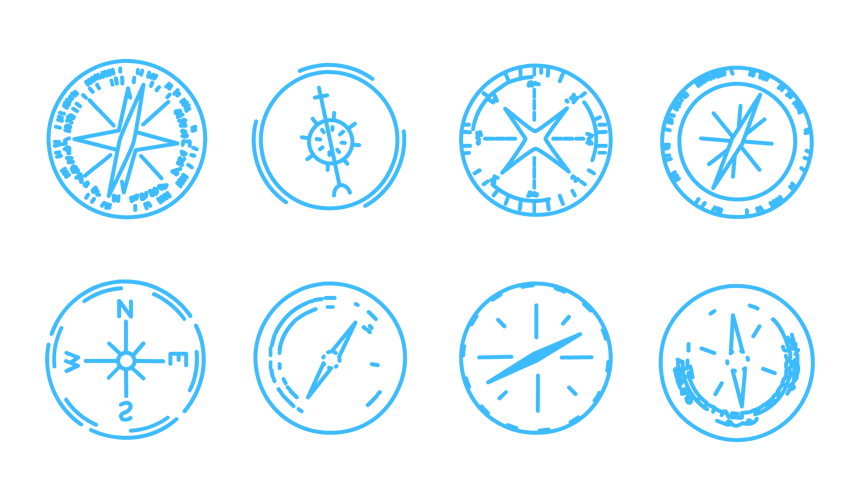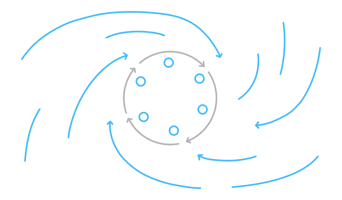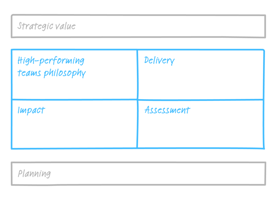
We can all agree that clear communication is a crucial factor for team success. In practice, however, it often occurs that we use the same words but mean completely different things – without noticing. The following case example from one of our users highlights how the Team Kit has enabled them to identify and overcome less obvious misalignments within their team and unlock their full potential.
When talking about team dynamics, it is often easy to recognize when things are not going as planned. Conflict and tension arise, and discussions recurringly revolve around the same fundamental topics. However, some misalignments within a team can remain hidden, even when the team is performing well. This is especially true in diverse teams with varying cultural and educational backgrounds. Uncovering these concealed misalignments requires delving “beneath the surface”, targeting unconscious beliefs, assumptions, and values that influence team interactions, decision-making, and problem-solving. Once these are identified, discussions about team alignment can help a team reach a deep sense of purpose and reach their full potential.
Is my team actually aligned?
Misalignment within a team can have detrimental consequences that extend beyond mere disagreements. Miscommunication, conflicting goals, and unaddressed misunderstandings can erode team cohesion, decrease productivity, and even lead to project failures. For instance, a misaligned team may find themselves working towards different interpretations of strategic priorities, resulting in wasted efforts and missed opportunities.
On the other hand, an aligned team experiences increased productivity, more efficient decision-making, proactivity, adaptability to change, stronger team cohesion, and a culture of innovation, just to name a few. These benefits create a positive work environment and motivate the team towards achieving its goals and delivering exceptional results.
This is exactly what Management Kits tries to trigger with the Team Kit. This was, e.g., the case in one of our user’s team. The fast-growing, Switzerland-based startup with a distributed and hybrid workforce across geographies in Europe in the ed-tech space experienced a well-functioning, high-performing organizational culture. Curious to find out how their team can measure competencies and further foster transparency, and continue to learn and grow, they employed the Management Kits 360 Team Evaluation. While the results indicated that the team is high performing in all of the categories, there were, in fact, certain areas where the spread of results was wider.
How well is your team performing?
Try our free evaluation
How to achieve alignment in practice
Achieving alignment within a team becomes particularly important when it comes to strategic goals and key strategic priorities. Often, what initially appears as shared understanding, can prove to be quite different upon reflection. Ultimately, the report included in our Team Kit enabled the ed-tech startup to identify areas of misalignment that were previously unnoticed due to their diverse backgrounds, as the survey answers made participants aware of their various interpretations and understandings.
In a 2-day workshop dedicated to reflect, revise the business model and identify key strategic priorities, half a day was allocated to discuss the report's results, which served as catalysts to pave the way for enhanced team alignment. Especially regarding what the team members understood as “explorative” seemed to differ substantially. While some related an explorative approach to strategy as carefully curated and evidence-based, others interpreted it as iterative cycle of opening the process of learning-by-doing. While neither of these approaches are wrong per se, it quickly occurred to the team members that aligning their way of problem solving is crucial to effectively move forward together.
Leveraging diversity for alignment
Diverse teams offer unique advantages (but also significant challenges) when it comes to alignment. One the one hand, varying backgrounds, cultures, and educational experiences can enrich the team's understanding and decision-making process. By fostering an inclusive environment that values and embraces diversity, team leaders can harness the power of different perspectives to uncover hidden misalignments and create innovative solutions. On the other hand, it is important to address potential challenges that may arise, such as cultural differences or communication barriers, to ensure that diversity strengthens alignment rather than hinders it.
In our example, it was critical for the team to consider diversity in the discussion regarding their explorative approach. The startup consists of four people, between age 20 and 50, half male, half female, and with experiences in IT project management, university education and corporate communications in industries like sports management, audio, telecommunications, education, publishing and politics.
Even though there was a common agreement on using the word ‘explorative’ for key strategic priorities and an innovation project, it was not apparent how significant their understandings differed until they proactively conversed about it. Questions they asked themselves when reflecting were, e.g., “What are we exploring? How are we exploring? Which projects do we want to explore?” It however, paid off significantly. Discussing alignment brought a new sense of purpose that helped clarify and strengthen their business model.
Alignment is a process: Ensuring continuous learning and growth
But here’s the thing: alignment doesn’t happen once. Just like strategic priorities, the context an organization is moving in is dynamic. It therefore takes continuous re-orientation and sense-making of situations on-the-job to ensure regular, structured and honest discussions. This can also include documenting learnings and reviewing them prior to new challenges. Although that might feel like it’s holding the team back at times, it is crucial to encourage team members to continuously and repeatedly voice their concerns, ask questions and seek to fully understand what is meant in detail. Only this way, it is possible to get to the true core of things that would otherwise float “beneath the surface” and might lead to misalignment.
This implies, that team leads have a high responsibility in this process. It takes a team leader exemplifying this behavior consistently (and not only in fixed „lets talk about the team“-moments!) to enable all team members to challenge each other’s views and assumptions. Maintaining alignment requires a commitment to continuous learning and growth in every interaction. Cultivating a culture of learning fosters adaptability and enables teams to adjust to changing circumstances and evolving strategic priorities. Embracing a growth mindset ensures that alignment remains a dynamic and ongoing process rather than a one-time achievement. Also, regular check-ins and feedback sessions provide opportunities for team members to express concerns, share insights, and address potential misalignments.
In the end, team alignment is paramount to achieving success. When teams recognize how crucial it is to look “beneath the surface” and leverage their diversity, they can unlock their full potential. However, team alignment is only sustained by continuously reflecting, striving for growth and adopting a culture of learning.
Ready to align your team?
Discover more resources from our experts


